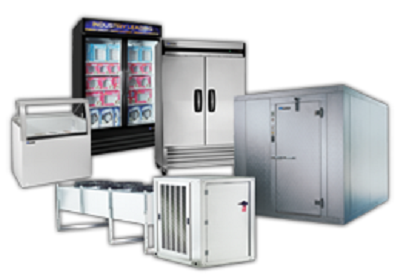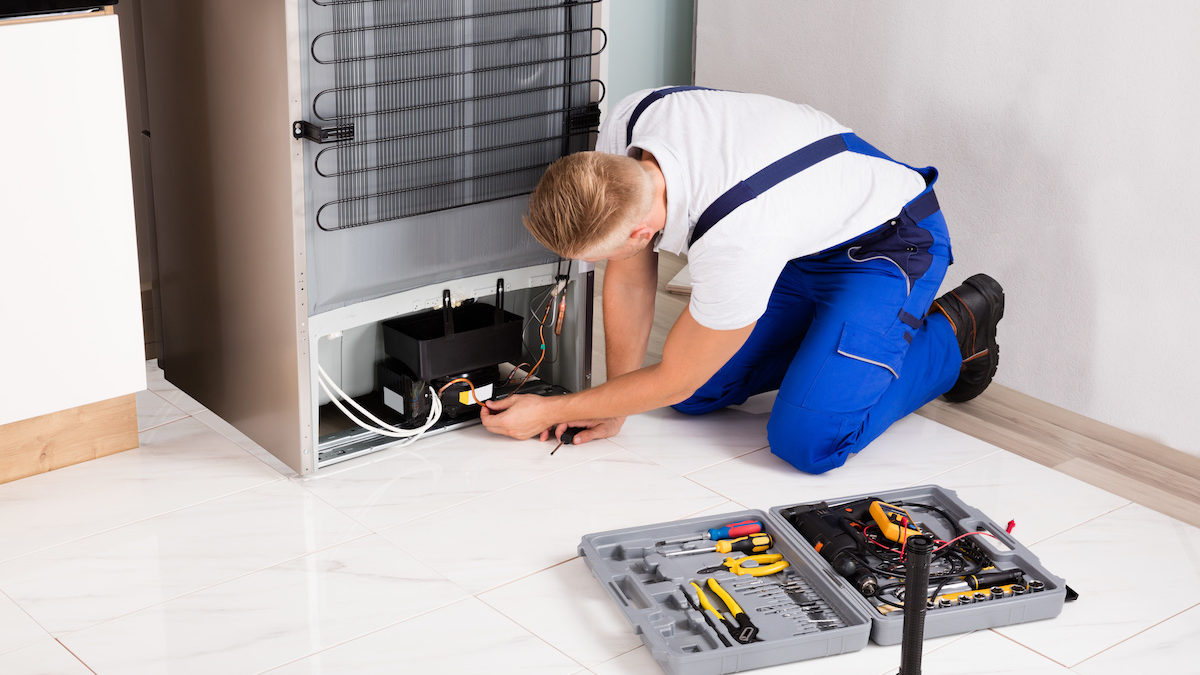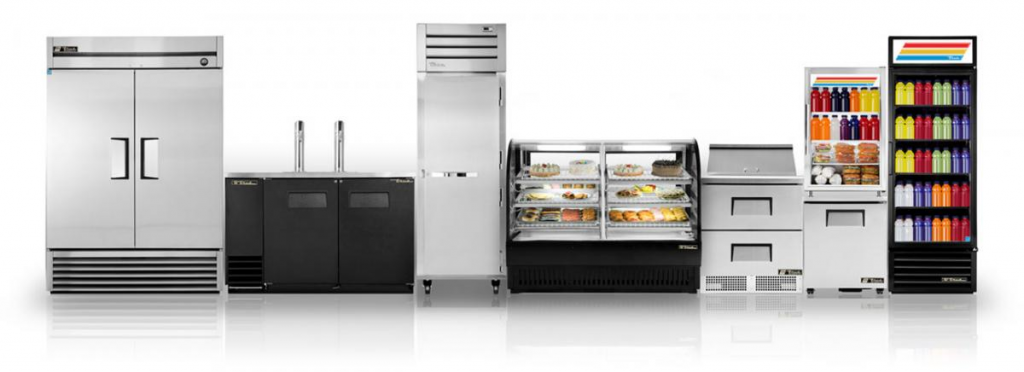Dependable Refrigeration & Appliance Repair Service LG Appliance Repair Checklist: Spotting Common LG Appliance Problems Early
Dependable Refrigeration & Appliance Repair Service LG Appliance Repair Checklist: Spotting Common LG Appliance Problems Early
Blog Article
Important Tips for Effective Ref Repair Work to Expand Home Appliance Life-span
When it comes to your fridge, appropriate fixing and upkeep are essential for durability. Understanding common issues and knowing when to act can make all the difference.
Understanding Typical Refrigerator Problems
Refrigerators are crucial in maintaining your food fresh, however they can experience a variety of common problems that disrupt their performance. If you notice food spoiling quicker than normal, check the thermostat setups or consider if the door seals are damaged. Identifying these problems early can conserve you time and money in repair services, guaranteeing your refrigerator runs smoothly and successfully.
Routine Upkeep Practices
To keep your home appliances running smoothly, you require to remain on top of routine maintenance practices. Tidy the condenser coils, examine the door seals, and keep an eye on the temperature settings to assure peak efficiency. These easy jobs can conserve you time and cash on repair work down the line.
Tidy Condenser Coils On A Regular Basis
Cleansing your condenser coils regularly can greatly enhance your device's effectiveness. Dust and dirt develop up on these coils over time, creating your device to work more difficult and consume more power. To keep them clean, disconnect your home appliance and very carefully remove any kind of protective covers.
Examine Door Seals
3 simple steps can help you ensure your device's door seals are in good problem. First, evaluate the seals routinely for any type of splits, splits, or signs of wear. These damages can bring about air leaks, affecting effectiveness. Second, tidy the seals making use of cozy, soapy water to get rid of any particles or grime. A tidy seal assures a tight fit and much better performance. Carry out an easy examination by shutting the door on an item of paper. If you can conveniently draw it out without resistance, the seal might need changing. By adhering to these actions, you'll preserve your appliance's performance and durability, conserving you money on power bills and repair services in the future.
Display Temperature Level Setups
Frequently monitoring your device's temperature level setups is crucial for ideal performance and efficiency. Whether you're dealing with a fridge, fridge freezer, or oven, watching on these setups can protect against lots of problems. For fridges, goal for temperature levels in between 35 ° F and 38 ° F; for freezers, stick around 0 ° F. If the temperature levels are as well high or reduced, your appliance might work harder, throwing away energy and reducing its lifespan. Make use of a thermometer to inspect these settings routinely, particularly after major modifications, like relocating your appliance or changing the thermostat. If you see variations, adjust the settings accordingly and speak with the customer manual for assistance. By remaining proactive concerning temperature tracking, you'll ensure your devices run efficiently and last longer.
Repairing Air Conditioning Concerns
When your fridge isn't cooling properly, it can bring about spoiled food and lost money, so addressing the problem without delay is vital. Beginning by examining the temperature setups to confirm they're at the recommended degrees, normally around 37 ° F for the refrigerator and 0 ° F for the fridge freezer. If the settings are proper, evaluate the door seals for any spaces or damage; a defective seal can enable warm air to get in.
Following, examine the vents inside the refrigerator and fridge freezer. Validate they're not obstructed by food things, as this can interrupt airflow. Listen for the compressor; if it's not running or making uncommon noises, it might need attention. Inspect the condenser coils, normally located at the back or bottom of the device. Dirt and particles can gather, creating cooling down issues. Tidy them with a vacuum or brush to optimize performance. If troubles persist, it might be time to call a specialist.
Repairing Water Leakage and Ice Accumulation
If you're taking care of water leak or ice build-up in your device, it's vital to identify the source of the issue. By identifying where the water is originating from, you can protect against more issues and stay clear of costly repair work. Let's discover some effective methods to take on these typical problems.
Recognize Leakage Resources
How can you effectively determine the resources of water leakage and ice accumulation in your home appliances? Begin by inspecting the seals and gaskets on your fridge and freezer doors. A used or click here for info broken seal can permit cozy air to enter, triggering condensation and ice. Next, inspect the drain frying pan and drain system for clogs or blockages; a backed-up drainpipe can cause water merging. Seek any loose links in the water supply line, which can produce leakages. Take a look at the defrost drainpipe for ice build-up, which could interrupt appropriate water drainage. By methodically inspecting these areas, you'll pinpoint the source of the issue, enabling you to take the required steps to repair it and extend your home appliance's lifespan.
Prevent Ice Development
To stop ice formation in your appliances, begin by validating the temperature setups are appropriate. If your refrigerator or fridge freezer is also cold, it can cause extreme ice accumulation. Examine the door seals on a regular basis; harmed seals can let cozy air in, causing condensation and ice development.
Keep the home appliance well-ventilated and prevent congestion, as this can obstruct air movement - Best Appliance Repair Near You Dependable Refrigeration & Appliance Repair Service. Consistently thaw your freezer if it doesn't have an automatic defrost attribute.
If you see water leak, determine and take care of any type of obstructed drain openings, as they can contribute to ice accumulation. Tidy the coils and validate they're operating correctly to maintain peak efficiency. Taking these steps will certainly help expand your device's lifespan and efficiency.
Addressing Noisy Refrigerator Appears
While it might appear startling, a loud fridge frequently signifies minor concerns instead of significant breakdowns. Determine the source of the sound. Common wrongdoers consist of the compressor, followers, and water lines. If you listen to a humming sound, it could be the compressor striving; this could just be a regular operation sound.
Next, examine for loosened products inside. Often, containers or shelves can rattle, developing undesirable noise. Tighten up or reorganize them to remove the sounds.
If you observe a clicking noise, it could be the defrost timer. This is generally harmless yet can suggest it requires examination.
Ultimately, validate your fridge is level. An unbalanced appliance can create resonances and noise. Use a degree to inspect, and change the feet if required. Addressing these issues promptly can help maintain your refrigerator's efficiency and prolong its life you could try here expectancy.
When to Replace Components vs. Full Substitute

Consider the cost of fixings versus the appliance's value. Additionally, if you notice continuous troubles that maintain reoccuring, it's an indication that your appliance has reached the end of its life.
Understanding When to Call a Professional
Exactly how can you tell when it's time to employ a specialist for appliance fixing? If you discover uncommon noises, smells, or leakages, it's a clear signal that something's wrong. Do not neglect these signs; they commonly indicate deeper problems. If your appliance quits working altogether or frequently journeys breaker, it's an additional warning.
You should likewise consider your own comfort level with repairs. If you're unclear regarding detecting the trouble or lack the right devices, it's best to reach out for assistance. Remember, attempting challenging repair work can result in even more damage and even safety risks.

Often Asked Concerns
Just how Usually Should I Tidy the Fridge Coils?
You must cleanse your fridge coils every six months. This aids keep efficiency and prevents getting too hot. If you observe excessive dirt or pet dog hair, clean them a lot more frequently to ensure your fridge runs efficiently.

Can I Use Vinegar for Cleansing My Refrigerator?
Yes, you can use vinegar to clean your fridge! It's an excellent all-natural cleanser that removes odors and spots. Dependable Refrigeration & Appliance Repair Service LG Appliance Repair. Simply mix it with water, use it to surfaces, and wipe down for a fresh, clean refrigerator
What Temperature level Should My Fridge Be Ready To?
You must establish your refrigerator to 37 ° F(3 ° C) for optimal food conservation. This temperature maintains your food fresh while protecting against putridity, ensuring your grocery stores last much longer and reducing waste. It's a simple adjustment you can make!
Does a Fridge Required to Be Leveled?
Yes, your refrigerator needs to be leveled. If it's uneven, it can impact cooling effectiveness and trigger excess sound. Inspect the progressing legs and readjust them to guarantee appropriate equilibrium for perfect performance.
How Can I Minimize Refrigerator Energy Intake?
To reduce your fridge's power usage, keep it clean and well-ventilated, check door seals for leakages, set the temperature level between 35-38 ° F, and avoid overwhelming it. These steps can considerably lower your power costs.
Report this page